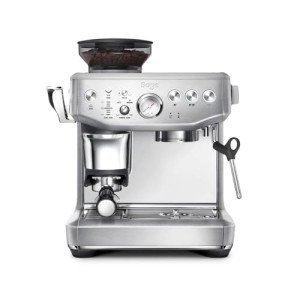You Will Meet You The Steve Jobs Of The Dual Boiler Espresso Machines Industry
Understanding Dual Boiler Espresso Machines: A Comprehensive Guide
Espresso is an art as much as it is a science. For coffee enthusiasts and baristas alike, accomplishing the best shot of espresso requires precision and control over developing variables. Among the most effective methods to achieve this accuracy is through using dual boiler espresso machines. This article explores the functionality, advantages, and factors to consider of dual boiler espresso machines for both beginners and experienced coffee enthusiasts.
What is a Dual Boiler Espresso Machine?
A dual boiler espresso machine includes two separate boilers: one for brewing espresso and the other for steaming milk. This design enables the user to brew coffee and steam milk simultaneously, achieving optimum temperature control for both procedures. This is important for producing lattes, cappuccinos, and macchiatos, where both ingredients are important.
Table 1: Key Components of Dual Boiler Espresso Machines
Element
Function
Espresso Boiler
Heats up water to the perfect brewing temperature (around 190 ° F)
. Steam Boiler
Heats up water to a greater temperature (around 250 ° F) for steaming milk.
PID Controller
Manages the temperature level of the boilers for accuracy developing.
Group Head
Where the coffee premises sit and warm water travels through.
Steam Wand
Provides steam to froth milk.
Benefits of Dual Boiler Espresso Machines
1. Synchronised Brewing and Steaming
The most significant advantage of dual boiler espresso machines is the capability to brew espresso and steam milk at the same time. This efficiency is particularly beneficial in busy environments, such as cafes, where speed and quality are vital.
2. Constant Temperature Control
Dual boiler machines often feature advanced PID (Proportional Integral Derivative) controllers that keep a consistent temperature throughout the brewing procedure. Consistency is important in espresso making to guarantee the best extraction, thus boosting taste and aroma.
3. Personalization and Versatility
With two different boilers, users can tailor the temperature level settings for both espresso developing and milk steaming. This indicates various kinds of coffee, such as lighter or darker roasts, can be prepared completely to fit individual taste profiles.
4. Perfect for Advanced Techniques
For those interested in latte art or other innovative methods, a dual boiler espresso machine supplies the flexibility to deal with different milk textures while likewise extracting espresso. This adaptability makes it an appealing choice for baristas who wish to refine their skills.
5. Longevity and Durability
Many dual boiler machines are developed with high-quality products created for longevity. They are often made from stainless steel and feature long lasting elements, making them a beneficial investment for anyone severe about coffee.
Downsides of Dual Boiler Espresso Machines
Despite their numerous benefits, dual boiler machines can have some disadvantages:
- Higher Cost: Dual boiler machines tend to be costlier than their single-boiler counterparts, which might not appropriate for casual coffee drinkers.
- Size and Space: These machines may occupy more countertop space than others, making them less perfect for little kitchens.
Table 2: Key Considerations When Choosing a Dual Boiler Espresso Machine
Factor to consider
Description
Budget
Dual boiler machines can vary from ₤ 1,000 to over ₤ 4,000.
Size
Inspect your kitchen area before acquiring.
Brand name Reputation
Look for well-reviewed brand names with good consumer assistance.
Functions
Consider what functions are important (e.g., PID controller, volumetric choices).
Upkeep
Some machines may require more routine maintenance than others.
Frequently asked questions
1. Are dual boiler espresso machines worth the investment?
Yes, they deserve the investment for severe coffee lovers or professional baristas who value accuracy in espresso extraction and milk steaming.
2. How do I maintain a dual boiler espresso machine?
Regular upkeep includes descaling the machine, cleaning the group head, and ensuring that the steam wand is without milk residue. Consult Pod Espresso Machines for particular standards.
3. Can I use a dual boiler espresso machine for other developing approaches?
Generally, dual boiler machines are developed mainly for espresso. Nevertheless, Manual Espresso Machines can normally brew quality drip coffee and other styles with the right settings and modifications.
4. What brand names are known for their dual boiler machines?
Some trustworthy brands include La Spaziale, Breville, and ECM. Each brand has its own distinct features and rates.
5. What is the average lifespan of a dual boiler espresso machine?
With proper care and maintenance, a dual boiler machine can last over a years, making it a long-term investment for coffee fans.
Dual boiler espresso machines represent the apex of espresso-making innovation, combining art and science into one compact gadget. While they need a greater initial financial investment and more countertop area, the benefits they offer— such as synchronised brewing and steaming, exact temperature control, and durability— make them ideal for major coffee lovers. Understanding the functions, advantages, and factors to consider for these machines will allow consumers to make informed decisions and elevate their coffee brewing experience. Whether in your home or in a busy coffee shop, a dual boiler machine can really improve the art of espresso.
